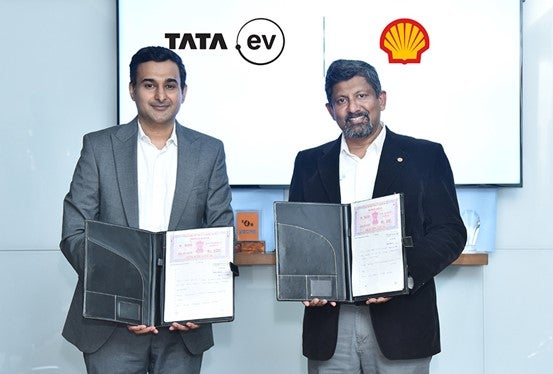
In a third guest article written exclusively for just-auto, Dato Madani Sahari, the CEO of Malaysia Automotive, Robotics and IoT Institute (MARii), describes Malaysia's latest national strategy for auto industry development and the importance of developing critical components for future mobility technologies.
Malaysia's highly anticipated National Automotive Policy 2020 (NAP2020) was launched on the 21st of February, signalling Malaysia's intentions to participate in the global connected mobility market that has gained tremendous traction over the last few years.
The new policy looks at three new elements – Next Generation Vehicles (NxGV), Mobility as a service and the Industrial Revolution 4.0 as its three primary thrusts to push Malaysia's industry forward into the future.
"The NAP2020 also outlines directions that focus on technology, investment and market expansion to enhance the industry in higher value products in line with disruptions to the global automotive market."
The NAP2020 also outlines directions that focus on technology, investment and market expansion to enhance the industry in higher value products in line with disruptions to the global automotive market. The strategies were also announced to focus on value chain development, human capital as well as safety, environment and consumerism within the sector.
For the first time, the policy is guided by a national vision for the automotive industry – the National Automotive Vision outlined Malaysia's goal to be a regional leader in manufacturing, engineering, technology and sustainable development in the automotive sector, through 5 thrusts covering Supply Chain Integration, Local Manufacturing, Engineering Capabilities, Latest Trend Technology and Sustainable Development.
See Also:
Seven roadmaps and blueprints will outline specific guidelines for the implementation of the NAP2020, covering various aspects to support the development of a connected mobility sector.
How well do you really know your competitors?
Access the most comprehensive Company Profiles on the market, powered by GlobalData. Save hours of research. Gain competitive edge.

Thank you!
Your download email will arrive shortly
Not ready to buy yet? Download a free sample
We are confident about the unique quality of our Company Profiles. However, we want you to make the most beneficial decision for your business, so we offer a free sample that you can download by submitting the below form
By GlobalDataWhile the policy is a broad document that outlines the thought leadership of the Malaysian government in future connected mobility, it is important that the industry understands the path of least resistance towards the development of technology via the NAP2020.
While the specifics of the entire policy needs to be explained further, it important for me to highlight – particularly for a regional and international audience – where implementation and planning should start.
As mentioned, two aspects of the NAP2020's direction look at the technology development and investment in future technologies, on top of energy efficient technologies that have been previously outlined in the policy's predecessor, the NAP2014.
Let's go to investment first and foremost – the NAP2020 will continue its proven approach of customised incentives for investors. However, on top of a focus on energy efficiency, the NAP 2020 expands this to also include new technologies, products and services that cover the primary thrusts mentioned above.
The customised incentives model is straightforward in its principles – in which the companies wishing to invest in operations within Malaysia provide the government with a proposal for a business plan that includes a "wishlist" of incentives needed to start competitive operations.
The contents of this wishlist will be measured against a cost benefit analysis of the value of investment brought in, in particular the spill-over benefits in the forms of quality jobs, localisation opportunities or local value chain networking, to name a few.
This model works best as opposed to standard incentives. For example, a blanket policy of the granting of pioneer status may not appeal to all companies, especially if tax holidays do not bring much incentive to a company with mass appeal in Malaysia.
What sort of investment would then be incentivised? This is where the NAP2020 Direction for Technology comes in. This section of the NAP2020 addresses the general and specific measures to spur technology development within the industry.
The general measures will be an enhancement of standards for EEV specifications, and new regulatory frameworks for Next Generation Vehicles, including motorcycles, commercial vehicles and electric vehicles – in order to harmonise the development of such technologies among industry players.
The government also plans to increase strategic collaborations with research institutions, technology leaders and various trading partners towards expanding the capacity network. On top of this, funding mechanisms and infrastructure development will be reviewed an enhanced in order to create a complete ecosystem for development to flourish.
Developing critical components
"The NAP2020 has laid down a three phases development timeline for critical components that will penetrate the connected mobility markets over the next decade."
More importantly, the NAP2020 has laid down a three phases development timeline for critical components that will penetrate the connected mobility markets over the next decade.
These begin with technologies needed in Level 1 and Level 2 autonomous vehicles – such as big data management systems, advanced materials, LIDAR, battery packs and cybersecurity, before focusing on more advanced technologies such as nano-materials, machine learning, V2X communication modules and ultra-fast charging at the end of the development cycle.
In order to start on the implementation of the NAP2020, I would recommend that the strategic planning and business development begin with aspects of Technology and Investment as mentioned above. Investors are urged to begin exploring these areas of technologies as they are a crucial ingredient in the rolling out of customised incentives mentioned in the NAP 2020.
As our team completed the NAP2020, we came to an important realisation – this is a policy that would be impossible to explain in a single article, or even in a one day lecture. My team and I will be working on a longer term campaign to explain all the details of the policy over the next few months. Please contact me or my team through MARii's portal or through our social media channels if you seek clarification on the NAP2020.
The writer is the chief executive officer of Malaysia Automotive, Robotics and IoT Institute (MARii).





Related Company Profiles
Malaysia Automotive Robotics and IoT Institute